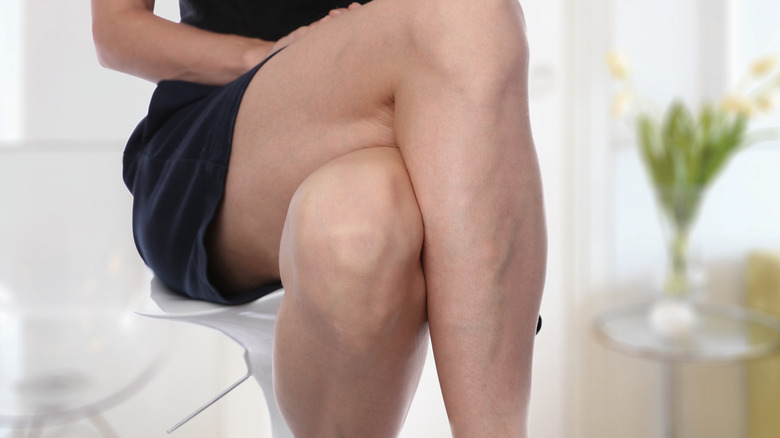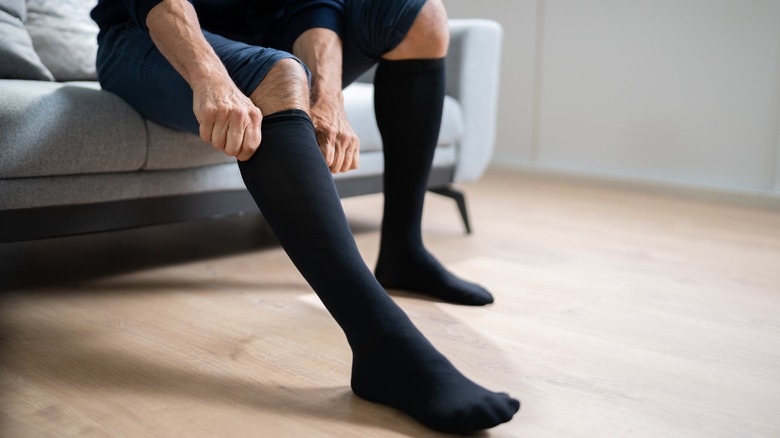What Causes Varicose Veins?
While you may have heard the terms used interchangeably, varicose veins and spider veins have marked differences. Usually red in color, the U.S. Department of Health and Human Services reports that spider veins are small, web-like veins that appear just below the skin's surface. Varicose veins, on the other hand, are larger than spider veins and twist and bulge from underneath the skin. Usually residing on the thighs, ankles, or feet, varicose veins may also appear along the pelvic region or buttocks of those who are pregnant.
According to WebMD, constipation, a medical history of blood clots, the use of oral contraceptives, hormonal changes, and jobs involving standing for long periods of time can all increase one's risk for developing varicose veins. Additionally, a 2018 study published in Circulation determined that taller individuals may also be more susceptible to the condition. Affecting an estimated 20% to 60% of people across the globe (via BMC Nursing), symptoms can include pain, cramping, tingling, burning, as well as the development of ulcers, among others. So what causes varicose veins to form in the first place?
How to treat varicose veins
Experts at the U.S. Department of Health and Human Services explain that veins are responsible for facilitating blood flow back to our hearts. As this happens, the valves within our veins will shut in order to ensure that blood travels in the proper direction. However, a weakened valve that doesn't close as it should enables blood to move backward, away from the heart. Blood can then accumulate in the lower part of the vein, build pressure, and cause the vein to bulge.
Treatment methods for the condition are generally aimed at boosting blood flow throughout the area (via WebMD). Compression stockings, for example, work by applying light pressure around the legs to reduce swelling and prevent blood buildup in the veins. Additionally, avoiding long stretches of inactivity by regularly switching between a sitting and standing position can also help relieve symptoms. Minor lifestyle changes may also be beneficial, such as elevating your feet while sleeping, refraining from crossing your legs, or trading in your high heels for a pair of low-heeled shoes. In more moderate-to-severe cases, nonsurgical outpatient procedures or surgery may be required.


